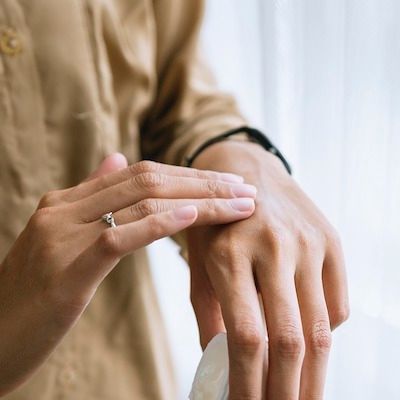News
Article
Views on Use of Patient-Reported Outcome Measures for Itch Assessment
Author(s):
These findings highlight clinician versus patient perceptions of chronic pruritus assessment using patient-reported outcome measures.
Credit: Pexels

Patient-reported outcome measures used for assessing chronic itch among those with are positively viewed by patients, according to new findings, whereas clinicians view instruments measuring pruritus intensity and quality of life impairments as helpful for clinical routines.1
These conclusions resulted from new research conducted with the purpose of evaluating the acceptability and the perception of benefits of validated patient-reported outcome measures. This study looked at the views of patients and clinicians within dermatological practices, looking at pruritus-specific measures available for assessing itch and its impacts.2
This new research was led by MP Pereira, from the immunology and allergology department at the Fraunhofer Institute for Translational Medicine and Pharmacology ITMP in Berlin, Germany. Despite widespread use of patient-reported outcome measures in specialized centers, both the acceptability and the benefits of the use from the views of doctors as well as patients were acknowledged as less well-known.
“To address this issue, we prospectively investigated patients' acceptability and physicians' perceived benefits of the use of (patient-reported outcome measures) measuring pruritus intensity, impairment of quality of life, disease control and general health both in dermatological outpatient offices and in specialized dermatological clinics.”
Background and Methods
The investigators looked at adult individuals who were faced with chronic pruritus due to dermatologic conditions such as psoriasis, atopic dermatitis, or chronic urticaria. They conducted this research using a prospective clinical questionnaire study design, with 10 dermatological private practices and 2 public dermatological clinics used by the investigators in Germany.
The research team requested that subjects fill out a general questionnaire highlighting topics such as duration of patients’ skin disease and chronic pruritus, sick leaves, demographics, daily activity and work effects, and out-of-pocket costs. Subjects would also use a set of validated outcome measures.
These included assessments of the Itch-Controlled Days (ItchCD) scale, a 9-item tool evaluating days free from or with controlled itch; the Dermatological Life Quality Index (DLQI), a 10-item survey evaluating the impact of skin conditions on quality of life; the worst intensity of itch in the past 24 hours using the Numerical Rating Scale (NRS) (0 suggesting no pruritus and 10 for the worst possible pruritus); the 5-Pruritus Life Quality (5PLQ), a survey of 5 items evaluating pruritus-specific impairments to life quality; and the EuroQol Visual Analogue Scale, assessing current general health status on a scale from 0 - 100.
After the use of these outcome measures, the investigators had participants rate the difficulty of completion of each one utilizing an NRS from 0, meaning not difficult, to 10, meaning quite difficult. They also evaluated the relevance of each outcome measure on a NRS from 0 - 10 and the length of each measure as either exactly right, too short, or too long.
Clinicians would also provide answers to a general questionnaire on the patients, highlighting the main reasons for chronic pruritus, whether it was specifically addressed in patients’ routine evaluations, and previous as well as current antipruritic therapies. The research team also had clinicians assess the usefulness of outcome measure implementation for therapeutic decisions on a NRS from 0 - 10, asking to rate feasibility of use and whether they would utilize them within clinical practice.
Findings
Overall, the investigators reported that patients viewed patient-reported outcome measures as highly acceptable, given low ratings of difficulty (median of 0, interquartile range of 0–1 for all outcome measures) and given their high ratings of relevance (median of 8, interquartile range of 4–10 for all outcome measures).
There were 523 participants included in this research, with the investigators noting that 46% had been male and there had been an average participant age of 53.5 years. Among these patients, the research team also found that 89–95% of them reported lengths of the surveys as being "exactly right."
The team reported that clinicians had determined the NRS to be the most beneficial tool, highlighting the fact that feasibility scores indicated there had been a median of 8 (interquartile range of 6–10) and scores in usefulness indicared a median of 9 (interquartile range of 7–10).
The investigators’ hierarchical linear regression analysis showed that recruitment site, comparing dermatological office versus clinic, had been shown to be substantially linked to the views of feasibility and helpfulness of the patient-reported outcome measures. Specifically, there had been higher ratings in the clinical context (βs = 0.149–0.258, PS < .05), except for the feasibility rating of the EQ5d, which was noted as not being significant (β = ns).
“One limitation of this study is that it was not recorded how many patients each physician has assessed,” they wrote. “The number of enrolled patients and the number of physicians varied across recruitment sites…Another limitation is the uneven distribution of diagnoses in dermatological offices in comparison with clinics.”
References
- Pereira MP, Zeidler C, Szymczak H, Bischoff C, Tsianakas A, Ständer S, et al. Acceptability and perceived benefits of validated pruritus assessment instruments in the dermatological office and clinic: The perspectives of patients and physicians. J Eur Acad Dermatol Venereol. 2024; 00: 1–9. https://doi.org/10.1111/jdv.20148.
- Topp J, Apfelbacher C, Ständer S, Augustin M, Blome C. Measurement properties of patient-reported outcome measures for pruritus: an updated systematic review. J Invest Dermatol. 2022; 142(2): 343–354.





